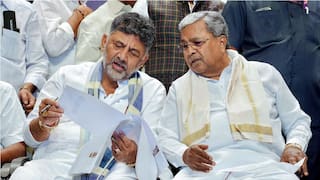India's Economy Likely Slowed To Annual 6.2 Per Cent In July-Sept Quarter: Poll
The 6.2 per cent annual growth forecast for latest quarter in a November 22-28 Reuters poll of 43 economists was a bit lower than the RBI's 6.3 per cent view

Indian economy likely returned to a more normal 6.2 per cent annual growth rate in July-September after double-digit expansion in the previous quarter, reported by Reuters. However, the news agency in its report pointed out that weaker exports and investment will curb future activity.
In April-June, India, Asia's third-largest economy, showed explosive growth of 13.5 per cent from a year earlier because of mainly to the corresponding period in 2021 having been depressed by pandemic-control restrictions. However, with the Reserve Bank of India (RBI) now raising interest rates to control inflation running above its target range of 2-6 per cent target, the economy is set to slow further.
The 6.2 per cent annual growth forecast for latest quarter in a November 22-28 Reuters poll of 43 economists was a bit lower than the RBI's 6.3 per cent view. Forecasts ranged between 3.7 per cent and 6.5 per cent.
"The exceptionally favourable base of the April-June '22 quarter is behind us, which will result in a normalization of the year-on-year real GDP growth rate from July-Sept '22 onward and also make it easier to gauge the true underlying economic momentum," said Kaushik Das, India and South Asia chief economist at Deutsche Bank.
Although business surveys indicated weakening economic activity in most major economies, where central banks are responding to soaring inflation with higher interest rates, business sentiment has remained relatively strong in India. Still, industrial production increased at an annual pace of only 1.5 per cent on average last quarter, its weakest in two years, pointing towards a significant slowdown in manufacturing activity, a key driver of growth.
"GDP is expected to increase sequentially, led by continued recovery in services. Mining and manufacturing are expected to be a drag. On the demand side, lower global growth hit exports in Q2 (July-September)," said Sakshi Gupta, principal India economist at HDFC Bank, adding there were signs that consumption was uneven.
On November 24, the finance ministry said a global slump might dampen India's export businesses outlook. Meanwhile, the RBI raised its key policy interest rate to 5.9 per cent from 4.0 per cent in May and is widely expected to add another 60 basis points by the end of March. "Between December and February, the headwinds to growth may become more evident," said Deutsche Bank's Das.







































